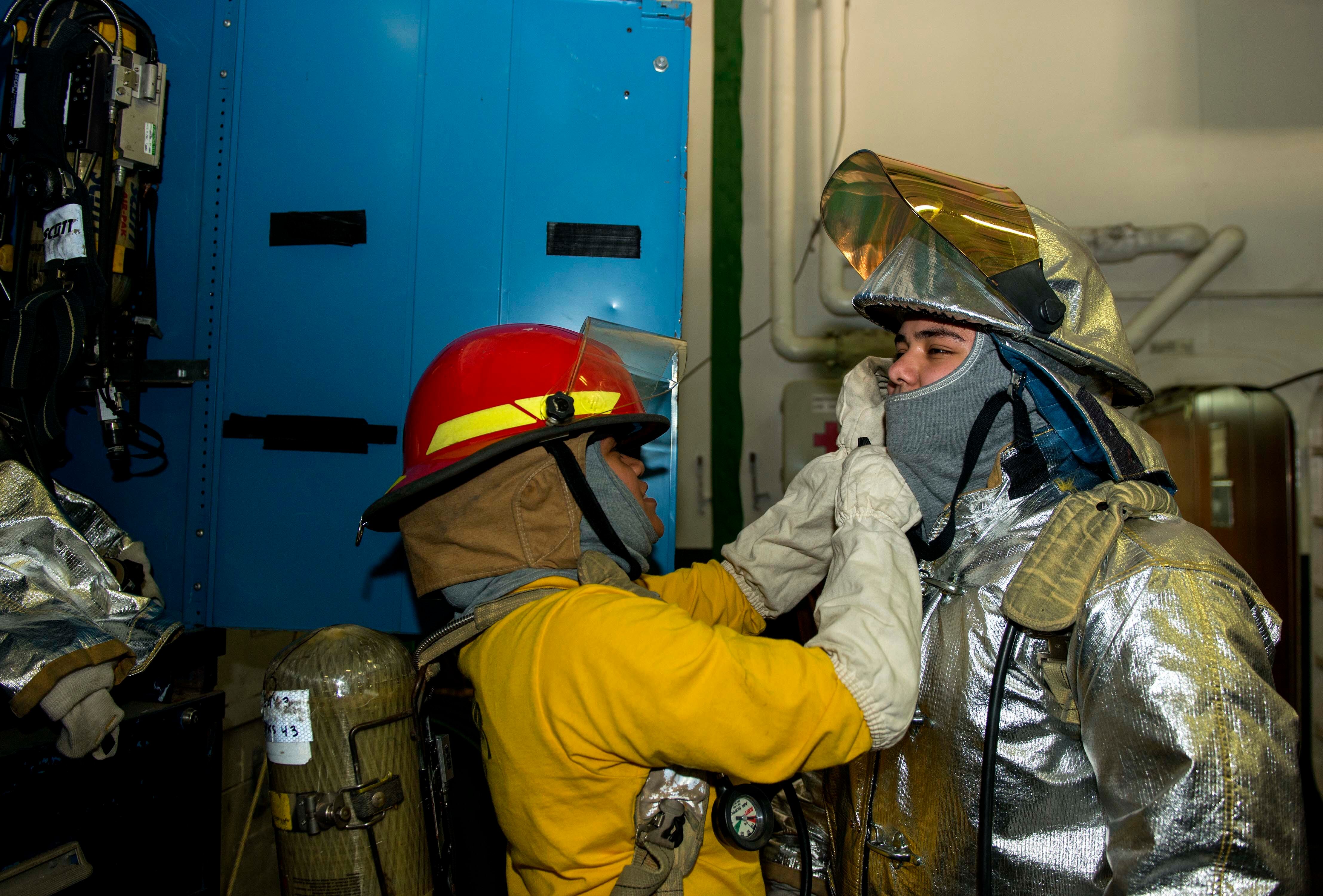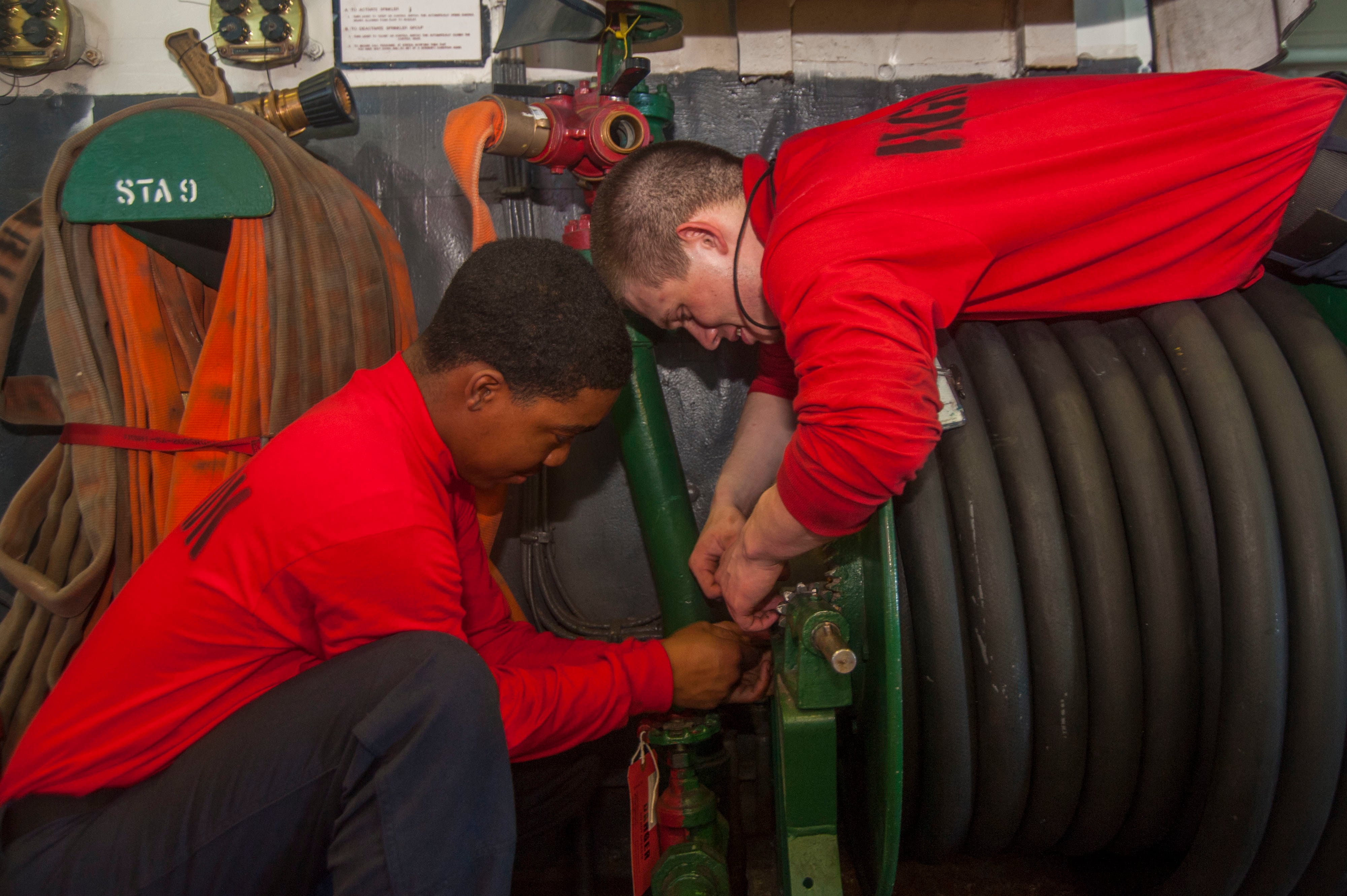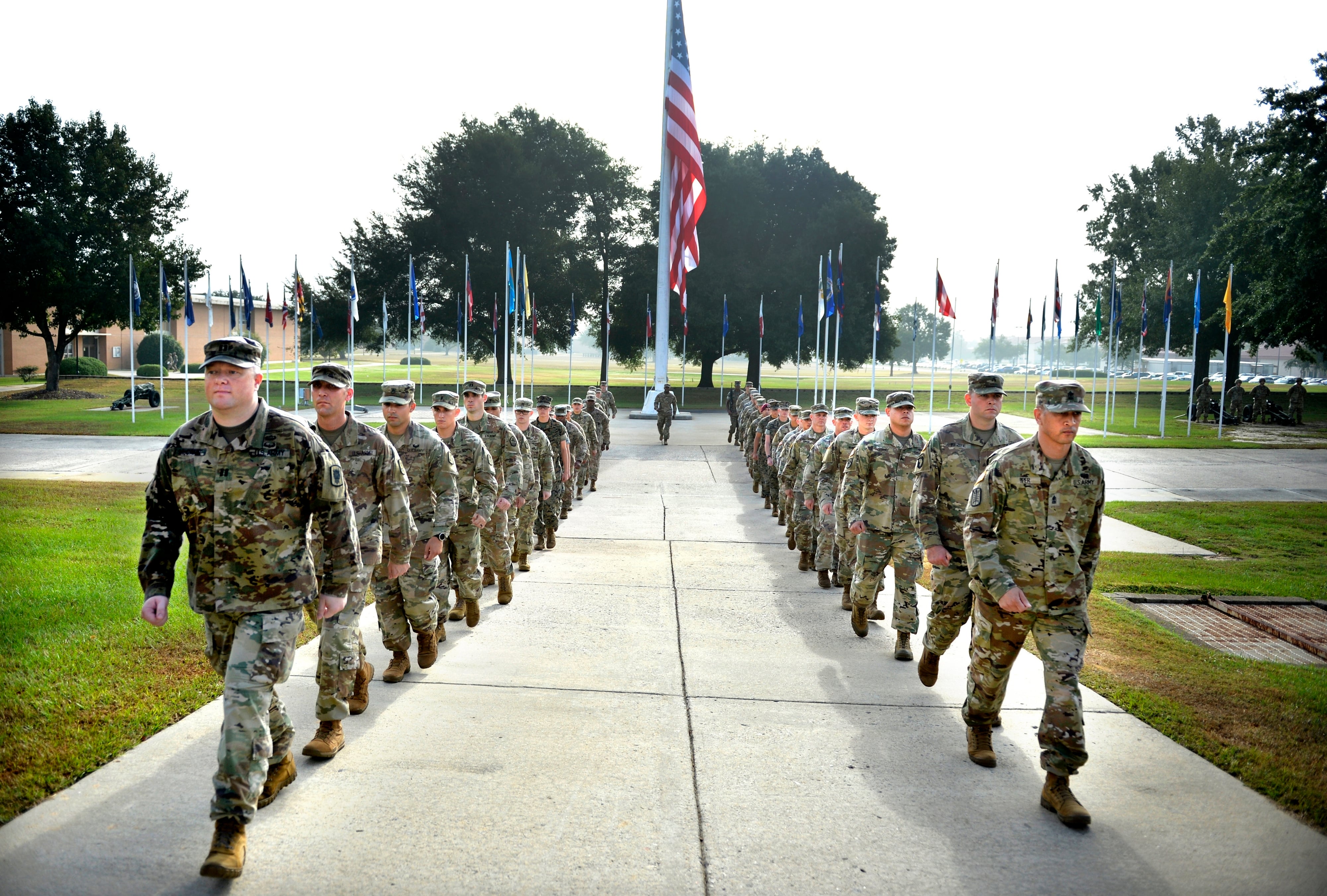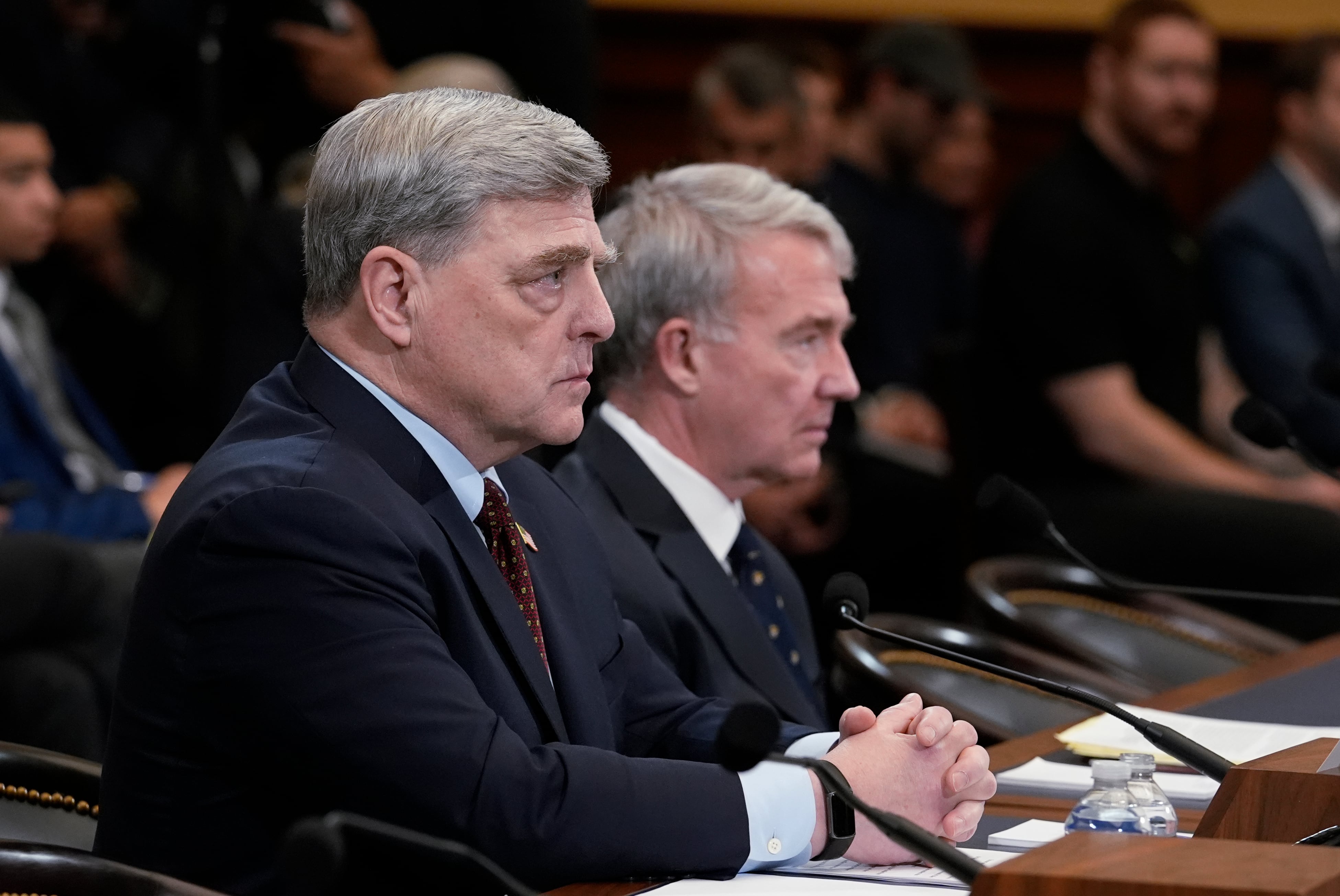ABOARD THE CARRIER HARRY S. TRUMAN — This flattop crew of carrier Harry S. Truman was hit late last year with news of an expedited deployment, shortened condensed availability and accelerated training schedule.
Give 'em hell … and they will give it right back.
The crew has jumped through countless hoops and hit tight deadlines to get the ship upgraded, repaired and ready for its fall deployment. This required some creative scheduling and "coloring outside of the lines," said Lt. Cmdr. Randy Harmon, Truman's training officer.
Indeed, many training events have been shortened or rescheduled.shifted to the left. The 30-day gap between Command Assessment of Readiness and Training II and the in-port portion of the Tailored Ship's Training Availability was eliminated, and both events were completed in advance of flight deck certification. While a typical carrier has 154 training days between flight deck certification and final evaluation, Truman will have fewer than 40.
Creative, sure, but there have been no short-cuts and the skipper has not asked for any waivers. To date, there has been no need. The motivated crew is working at this breakneck speed and scoring equal to is an openly motivated crew that has scored equalto (and sometimes better than) other flattopscarriers. But Truman is not out of the woods yet. The bulk of June will be spent conducting the ship's Final Evaluation Problem, a rigorous assessment that that's been cut from 25 days to 21 and . Tailored Ship's Training Availability/Final Evaluation Problem, or TSTA/FEP. The 25-day event has been cut to 21 days, and includes 311 events that must be completed with a passing grade before the ship's upcoming seven-month cruise.
If the crew can pull it off, the ship will be an independent unit ready for tasking.
Working together
Navy officials in October announced the news that Truman would deploy in the fall of 2015, a nearly half a year ahead of schedule. It She took the place of the carrier Dwight D. Eisenhower, which remains in the yard after back-to-back deployments in 2012-'13 that from June 2012 to December 2012 and from February 2013 to July 2013 caused led to more maintenance issues than expected.

Aviation Boatswain's Mate (Handling) 3rd Class T.A. Taifai, left, helps Aviation Boatswain's Mate (Handling) Airman M.E. Rojero don firefighting gear during a May 6 general quarters drill. The training schedule is so packed, some drills have been held in the middle of the night.
Photo Credit: MCSA A.L.M. VanGuilder/Navy
The skipper Then-commander Capt. Bob Roth mustered Truman's crew on the flight deck to break the news and encourage them to He encouraged the sailors to meet the challenge. Some responded with applause, others with stunned silence.
"I was like, 'But we just finished a nine-month deployment!' " said Interior Communications Electrician 2nd Class (SW/AW) Hilary Martin, phone work center supervisor. "Of course, nobody wants to hear that news, but we understand the needs of the Navy. It is our mission to be at sea."
Many among the crew credit the command triad and chief's mess with keeping morale high and the sailors focused on the fight. But support and encouragement is not exclusive to the khakis.
"We try to ensure that we have family care plans in order, and we keep a careful eye on one another," said Martin, who has two girls, ages 6 and 3, and a husband on shore duty.
Not everyone is pulling a double deployment. A little more than half of the crew reported aboard since the last float, and sea trials in late May marked the first time at sea for roughly 500 crew members. But the challenge of an expedited deployment has melded the crew into a cohesive team, crewmembers said. When Navy Times came aboard for flight deck certification in early June, it was not uncommon to see high-fives, handshakes, and hugs as sailors accomplished goals in various departments.
"We've got a really tight-knit group of individuals, very knowledgeable," said Electronics Technician 3rd Class Caleb McCray, a technician for the SPN-46 Automatic Carrier Landing System. "Yeah, a lot of us are young. Half of us are new to the ship, but overall we work really well together."
There are more new-joins to come, and this integration is a little trickier. Carrier Air Wing 3 has been Truman's air wing since the ship set sailed on its maiden deployment in 2000. This time, it will set sail with CAG-7 and a different strike battle group staff. The skipper likened the union to a spouses in a marriage.
"Between us and the air wing, we are going to have our own little individual ways we want to do things, our own quirks," said Capt. Ryan Scholl, who took command in February. "So we have to agree to compromise on those that don't really matter and we both have to see the light on things that really do matter, and then we have to function to do all of those things very well. If we get over into theater and we don't like each other … well, there is no divorce! To date, [the assimilation] has been fantastic."
Challenging times
Truman in November entered a curtailed condensed incremental availability at Norfolk Naval Shipyard, the first performed there. The availability was expected to last 15 weeks and require 78,000 man-days, but nearly doubled to more than 28 weeks and 135,000 man-days due to a need for additional work, said Colleen O'Rourke, spokesperson for Naval Sea Systems Command, who was unable to provide an explanation for the additional works for the causes of the added work. Reasons for the extension were not provided by press time.

Aviation Boatswain's Mate (Equipment) 2nd Class A.D. Larson performs maintenance on a retractable sheave aboard aircraft carrier Harry S. Truman on May 15. Truman was finishing up a condensed incremental availability period at Norfolk Naval Shipyard while training and acquiring certifications.
Photo Credit: MCSA J.A. Mateo/Navy
"Challenge is a good word" to describe the expedited avail and deployment, said Chief Electronic Technician Chief (SW/AW) Hall Dunn, a CS6 division leading chief petty officer. Upgrades to the SPN-46 Automatic Carrier Landing System were a major project for his division. The previous system was getting old, and with age comes issues of reliability and parts availability. Like many other upgrades throughout the ship, this one came down to the wire. Similarly, upgrades to the Distributed Common Ground System-Navy — the primary system for intelligence, surveillance, reconnaissance and targeting — wrapped up just as the ship left the yard May 22.
Martin's team replaced the "old, degraded" phone system. In this four-month process, the her sailors had to validate and mark 1,500 lines, rip everything out, replace it with the new, then verify each of the 1,500 lines.
Truman's propulsion plant and main engine also were modernized. A nuclear ship alteration that removed, repaired and reinstalled more than 20 pumps was completed ahead of schedule. The catapults saw nose gear launch systems, water breaks and jet blast deflectors overhauled. Crew members, with the help of the Voyage Repair Team, also tore out the catapult to realign the track. Each one averaged 50 to 60 shots daily during flight deck certs.
"So far, everything is working very well," said Aviation Boatswains Mate 2nd Class (AW) Christopher Conary, work center supervisor for Catapult 1. He should know. The five-year vet was on the carrier Abraham Lincoln's last deployment, in which a catapult water break was so worn it actually twisted. That is something civilian maintainers with 30 years' experience had never seen. Conary then reported to Truman for its nine-month pump in 2013. He knows the catapults inside and out, and is well pleased with the end product.
"All of our hard work is done," he said. "Now we are ready to do what we do best: Get out there and launch and recover aircraft. We are ready to go."
Despite the extension, some work remained undone. The NAVSEA officials were unable to specify NavSea officials would not specify what items had to be cut to get Truman didn't receive the new computer network, known as ut on time, but a key omission is the Consolidated Afloat Networks and Enterprise Services, which typically comes with Wi-Fi installed in some work spaces.or CANES network. But the time required to install CANES "would have put us at risk and our availability to get out and still be able to meet our deployment time frame," the skipper said.
"We didn't get a few upgrades on some of our systems [but] we are only an 18-year-old aircraft carrier, which in dog years, is very young. We are not old iron, we are not tired iron. With the relatively new design and some new equipment on here, we have a lot of the latest and greatest devices and weapon systems and radars. A lot of the things we didn't get, our larger scale upgrades, would have required a span of time that we couldn't do."
NAVSEA officials would not specify the other systems whose installations or upgrades were deferred.
'The best crew'
Scholl said it is not enough to have a combat-ready ship — it must be manned by a combat-ready crew, or "it is just 90,000 tons of inanimate steel."
The expedited workupsschedule left Truman with about half the training days allotted to carrier crews, according to the training officer. Everything was cut to the bone. Even flight deck certification, which normally runs from one week to 10 days, was given only three days.
"We don't have time to do it over, so we have to get it right the first time," said Harmon, whose training fluid schedule is so full that general quarters drills are more common at 4 a.m. than 4 p.m.
Pressing maintenance demands didn't help. More time in the yard meant fewer days at sea. In addition, sailors contributed 830,000 man-hours to more than 1,000 jobs there. But Truman is 98-percent manned, is aided by being fully manned. It's 98-percent manning is— a rarity in recent years, and that helps. an achievement that's part of the new deployment plan to man crews earlier and make ship schedules more predictable. but a primary goal of the Optimized Fleet Response Plan, which was designed to provide predictability in yard time and shorter deployments.
With the assistance of the Afloat Training Group, Truman used its extended shipyard availability to knock out the bulk of sailor certifications normally completed after sea trials. Hundreds of evaluations remain, which the crew will complete over 85 at-sea training days prior to deploying in the fall. Some days will see upward of 100 shots and traps, while others will see a variety of attacks and propulsion casualties.

Aviation Boatswain's Mate (Handling) Airman W. Young, left, and Airman J.S. Schwartz perform maintenance on an aqueous film-forming foam hose in the Truman's hangar bay May 31. Carrier Air Wing 7 and Truman are underway conducting flight deck qualifications.
Photo Credit: MC3 A. A. Cruz/Navy
"My baby is beautiful," Scholl said. "Harry S. Truman is the most awesome and powerful warship in the United States Navy. I believe that. But I have to listen to the assessment of the folks who are looking at all of the other aircraft carriers who say, 'You are strong in this area, keep that up. You are weak in this area, you need to function on that.' Some of the weaknesses are because we haven't been pushing the [engineering] plants, we haven't been operating at sea, or we haven't had the sets and reps required to do what we need to do."
The TRAINO Harmon is confident the ship could pass 80 percent of those remaining tests right now, and said they will soon conquer the 20 percent that remains. The reason, he said, is simple.
"In my 23 years, this has been by far the best crew that I've ever been associated with," he said. "I sometimes wonder if there is some sort of screening process for the people coming to the Truman, and we just don't realize it."





